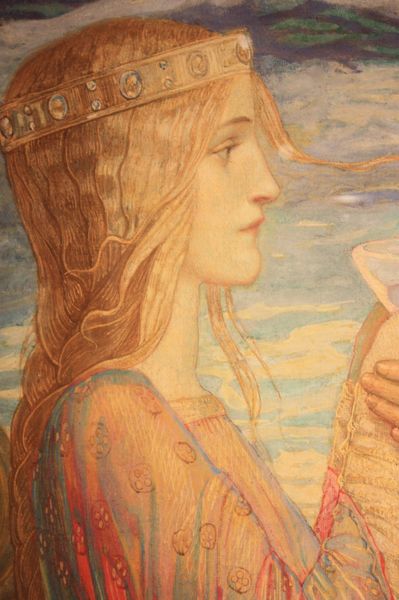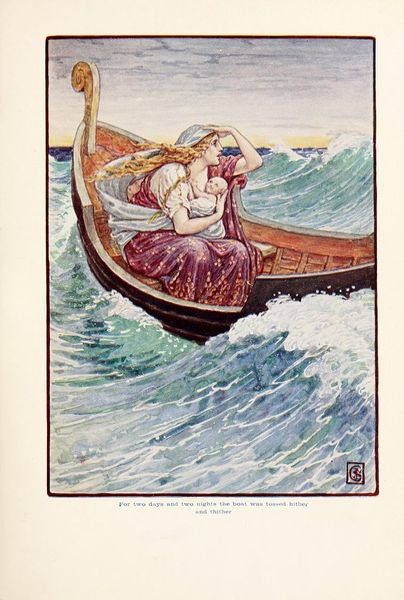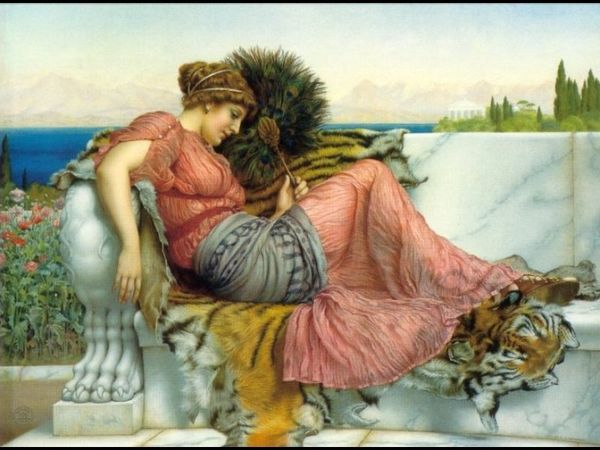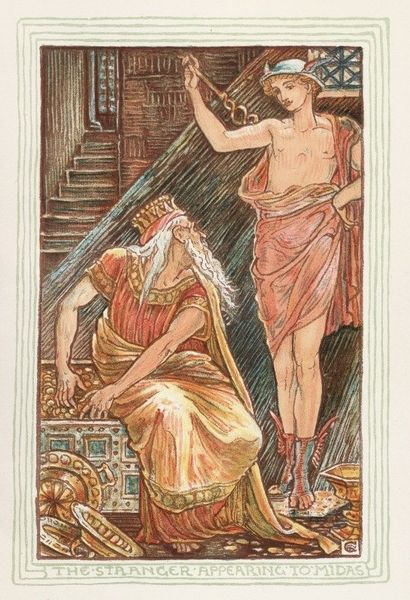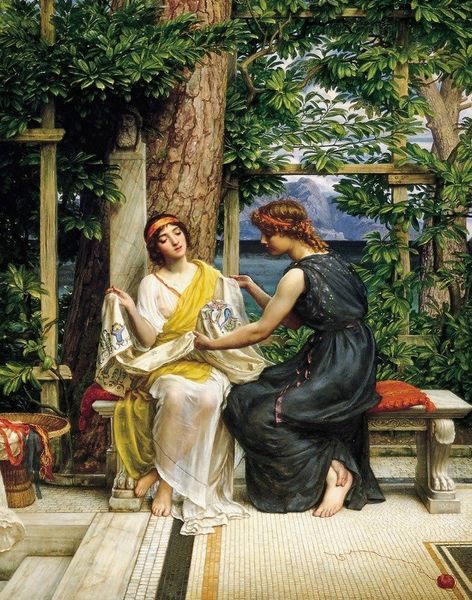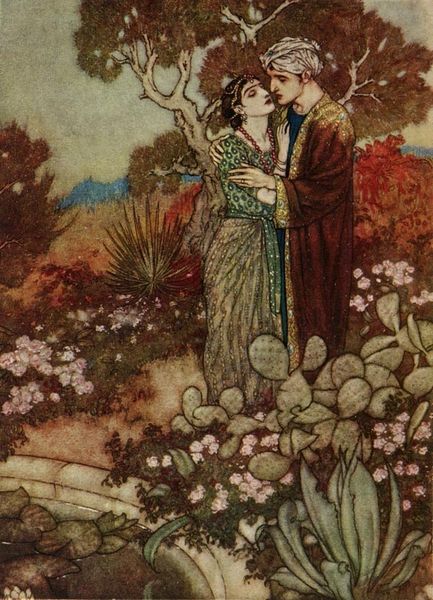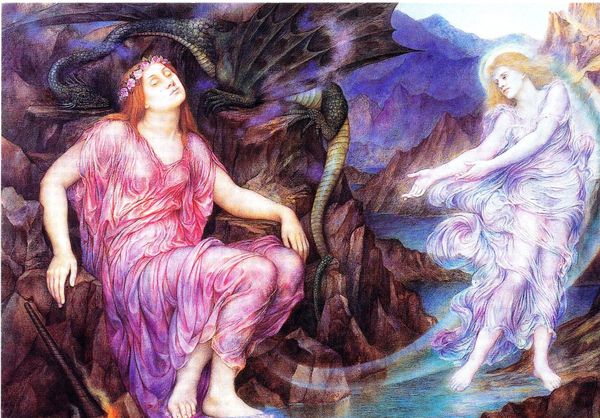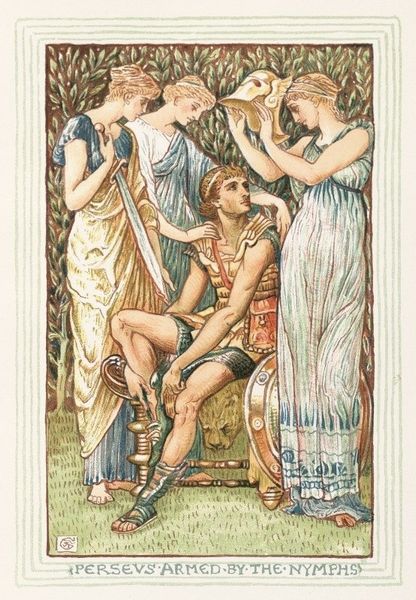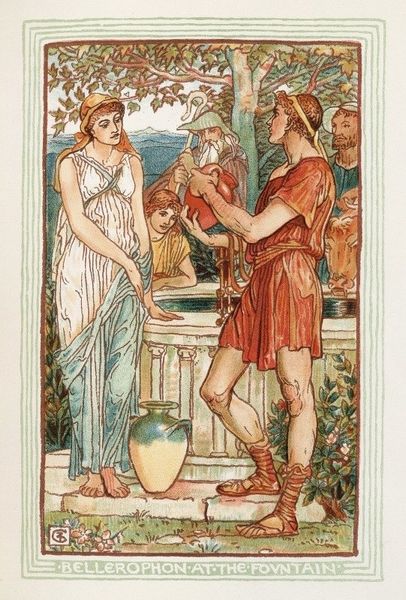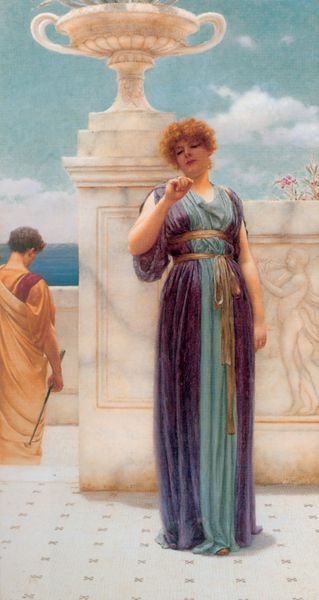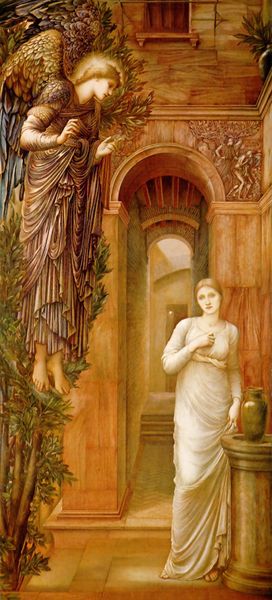
Copyright: Public domain
Editor: Here we have John Duncan's "Tristan and Isolde" from 1912, what I believe is an oil painting, maybe watercolor. It seems to capture a pivotal moment of shared destiny with very stylized figures, almost like a stage play. How do you interpret this work, especially given the context it was created in? Curator: The context is everything here. Duncan, steeped in the Symbolist movement and Scottish nationalism, presents us with a potent visual statement. Notice the Celtic knotwork. This isn't just decoration; it's a deliberate claim to a cultural heritage. The romanticism of the early 20th century played a huge part. Do you notice how they aren’t looking at each other? Editor: Yes, they both are looking to the left, or forward. Curator: Exactly! Duncan emphasizes not the passion of the gaze, but rather the force of destiny, and also think about museums, art galleries, cultural forces that shapes the creation of it, its public role as art and imagery. It reflects the societal longing for a heroic past in a rapidly modernizing world. This pre-WWI era saw artists trying to ground themselves in national myths and legends as Europe teetered on the edge of immense change. Editor: So, it's less about the individuals, Tristan and Isolde, and more about what they represent culturally? Curator: Precisely. It's the *idea* of Tristan and Isolde, utilized to explore notions of Scottish identity, romantic ideals, and a rejection of industrial society’s perceived soullessness. Duncan's imagery creates something deeply politically engaged, even if seemingly historical or ‘fantastic.’ Editor: I hadn't considered that connection before, between the art and the politics of the time, interesting. Curator: Indeed. By examining the societal values being projected onto figures from a heroic past, we get a clearer picture of early 20th-century anxieties and aspirations. I would look for others in these kind of symbolist fantasy portrait art. Editor: This really makes me think about the narratives artists choose to depict and what that says about the culture. I'll definitely keep an eye out for those elements in similar artworks going forward. Thank you.
Comments
No comments
Be the first to comment and join the conversation on the ultimate creative platform.

